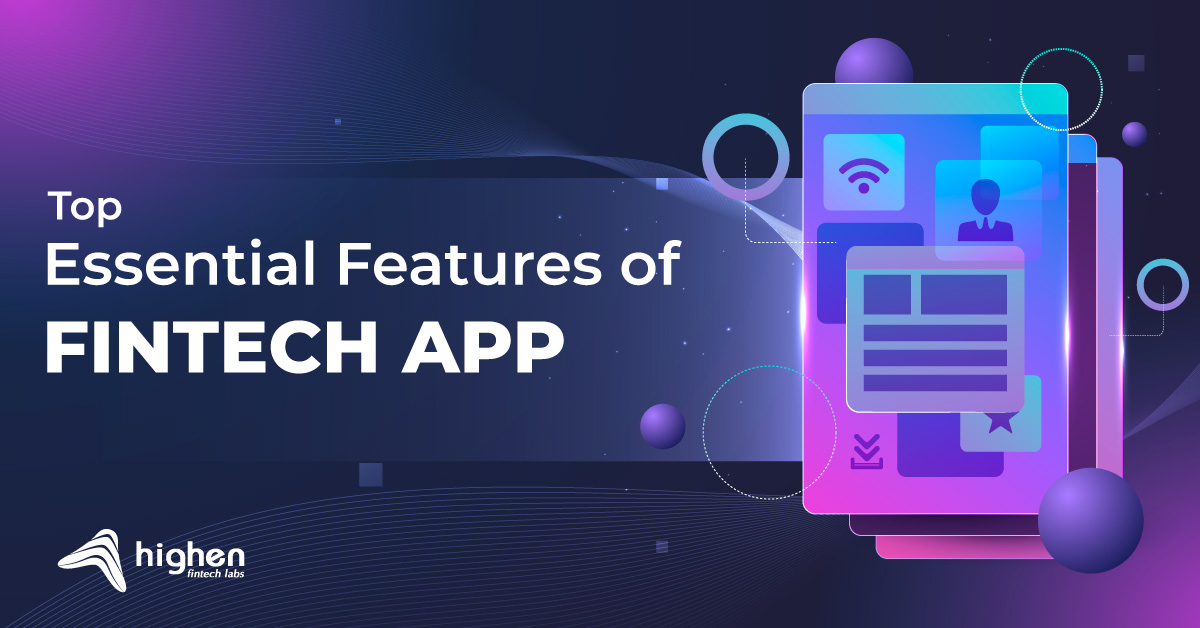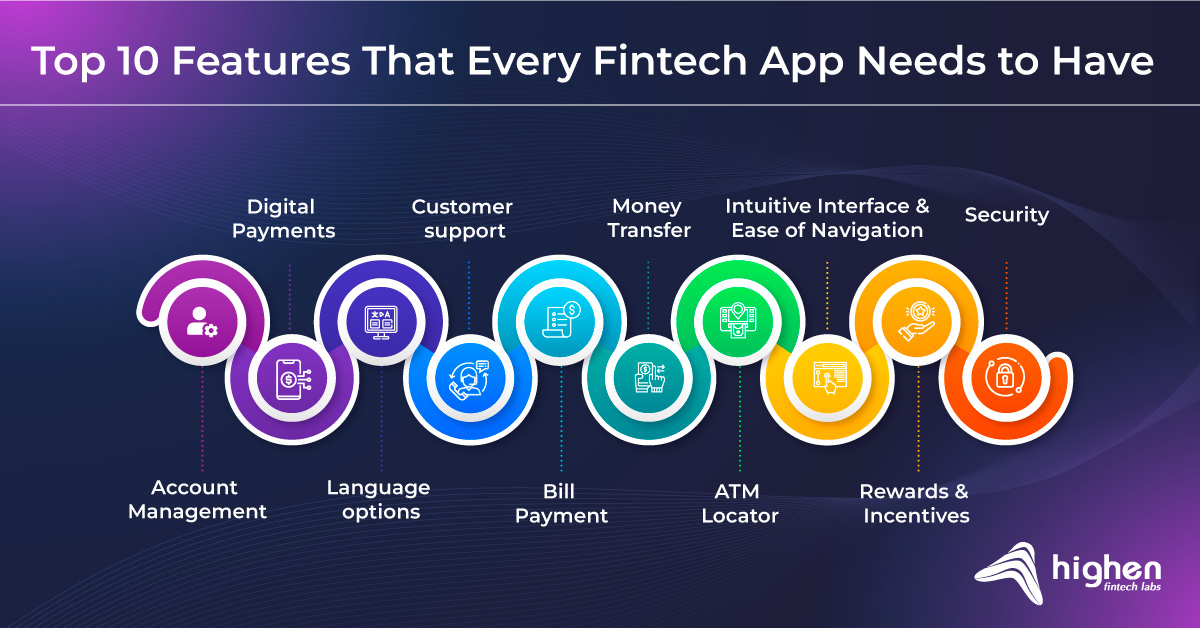Top 10 Essential Features of FinTech Apps

As more people use mobile technologies, FinTech apps are growing to unprecedented heights. Mobile transactions have increased to an unprecedented level in recent years. Studies indicate that as digital payments become more commonplace and neobanks and super apps gain traction, the global market for financial applications is poised for massive development.
Mobile applications have changed the customer experience. As consumer expectations increase over the next few years, it will be crucial for Fintech App development company
to take flexible features into account in order to attract and retain high-value clients. Here are essential features of Top FinTech Apps
What Kinds Of Fintech Applications Are The Most Popular?
If you have a deeper comprehension of the many FinTech app ideas that are out there, you’ll find it easier to make decisions. It’s challenging to build a FinTech app, but you must first choose the right kind of app.
- Apps for payments and money transfers: With their help, users may divide bills, send money abroad or domestically, and manage their accounts. PayPal, Venmo, Zelle, and Cash App are a few examples.
- Apps for managing personal finances: These tools assist users in keeping tabs on their earnings, outlays, savings, investments, and spending plans. They could also include fintech app features like tracking bills, assets, and financial goals. Mint, PocketGuard, YNAB (You Need a Budget), and Personal Capital are a few examples.
- Apps for lending and borrowing: Peer-to-peer (P2P), microloan, and crowdfunding are examples of lending and borrowing activities made more accessible by these apps. They could also provide debt management and credit score solutions. LendingClub, Prosper, Kiva, and Kickstarter are a few examples.
- Wealth management and investment apps like Betterment, Wealthfront, Acorns, and Robinhood facilitate various financial instrument investments, offering financial planning, portfolio tracking, and robo-advisory services for effective investment management.
- Apps like Coinbase, Binance, Ledger, and Mycelium allow users to buy, trade, and manage digital currencies like Bitcoin and Ethereum, simplifying cryptocurrency transactions. They may also provide blockchain-based financial services and cryptocurrency wallets.
- Financial education and literacy apps equip users with knowledge in areas like investing, retirement planning, and budgeting. These apps offer tools and instructional materials to enhance financial literacy and empower individuals to make informed financial decisions. Examples of financial apps: Personal Finance: LearnVest, NerdWallet, Investopedia, MoneyLion.
Top 10 Features That Every Fintech App Needs to Have
1. Account Management
Developing a unique user experience requires a specialized strategy for each of your clients. Because of this, banks are able to provide users with a personalized account management page that they may edit or personalize to suit their needs.
Users may make easy money transfers, monitor their activities and expenditures, and check the balance of their accounts. With this feature, users may get more done with the app without depending on the online applications.
2. Digital Payments
Digital payment is another essential feature at the top of the list for most customers. In the digital age, mobile banking apps must offer quick access to multiple payment methods like UPI and mobile wallets, enabling easy account management, recurring payments, and bill settlements for customers. It would be beneficial to set up regular payments with an automatic deduction from the user’s account because users could forget when payments are due.
Additionally, a FinTech app with digital payment options frees users from having to visit the bank to access their cash by enabling them to conduct transactions and view account information while on the go.
3. Language options.
Fintech apps ought to provide a selection of languages to consumers in terms of language selections. This makes it possible for users to use the app in their native tongue wherever they are in the world.
It is crucial to provide language alternatives for two reasons. Making software accessible worldwide enhances user convenience and usability.
Additionally, it aids in advancing inclusivity and diversity. Fintech software development companies demonstrate their commitment to diversity and inclusivity by offering a selection of languages. Further, they are showing their dedication to helping every community member.
A crucial component of any fintech software is its language options. Providers can customize the app by providing a selection of languages.
4. Customer support.
There are occasionally bugs or issues with even the most significant financial apps that need to be rectified. Customer service is vital. Offer support through email, phone, and online chat to assist users when needed, ensuring a responsive and helpful experience.
5. Bill Payment:
Fintech apps simplify bill payment, offering a centralized platform for managing costs. This convenience saves time and money, as users can pay bills, avoid physical visits, and even mail checks, all in one place. By guaranteeing that invoices are paid on time, Bill Payment can also assist consumers in avoiding late penalties and maintaining their credit scores.
6. Money Transfer:
Users should be able to transfer money to and from other users’ accounts using the app. Users may transfer and receive money using these fintech app capabilities without requiring actual currency or cheques. Paying suppliers or vendors is also handy for enterprises.
7. ATM Locator
An ATM location is one of the most crucial aspects of financial apps. This makes it possible for customers to locate ATMs nearby and take out cash as needed.
ATM locators are crucial for a number of reasons. They first assist customers in swiftly and conveniently accessing their money. Second, by enabling consumers to locate ATMs nearby, they enhance convenience. Thirdly, they facilitate safety by allowing the users to steer clear of hazardous or unfamiliar regions.
ATM locators are a crucial component of any financial app. Providers may support consumers in managing their money and making wise financial decisions by giving them access to local ATMs.
8. Intuitive Interface and Ease of Navigation
Above all, the application’s user interface needs to be simple and easy to use. Many programs provide users with confusing user interfaces and subpar navigational guidance, leading users to give up on them. The application should provide voice search and typed query capabilities, as well as intelligent shortcuts to frequently used features, to facilitate user navigation.
9. Rewards and Incentives:
One component of a fintech app that motivates users to interact with it and conduct financial transactions is rewards and incentives. Through the completion of particular activities or reaching predetermined milestones, users can earn awards, bonuses, or points using this function.
10. Security:
To safeguard user data, a fintech app should include robust security features, including data encryption, two-factor authentication, and biometric authentication (facial recognition or fingerprint scanning). A fintech app’s features aid in ensuring that only users with permission may access it and their financial data.
Fintech App Development Process of Highen Fintech
Fintech app development may be a challenging process that needs thorough preparation and implementation. Here’s a fintech guide.
1. Define your Aims and Establish who your Target Audience is
Specify the goals for your fintech application. Which issue does it resolve? What benefit does it provide users? Determine the needs of your target users. To learn more about your target market’s financial preferences, habits, and actions, conduct market research.
2. Create a Business Plan.
Make a thorough business plan that details the functionality, monetization strategy, marketing approach, and features of your fintech app. Determine the staff, money, and resources required for the creation of your fintech app.
3. Select the Appropriate Technology Stack
For your financial application, choose the right technological stack, taking into account databases, frameworks, programming languages, and third-party APIs. When choosing your tech stack, prioritize user experience, security, and scalability to ensure a robust and responsive application.
4. Craft an appealing and user-friendly UI/UX for your finance app.
Prioritize aesthetics, accessibility, intuitive navigation, and user-friendliness to ensure a seamless experience for all users.
5. Create the Frontend and Backend
Develop the server-side logic, databases, and Best Fintech APIs that make up the backend architecture of your Fintech application. Create the app’s frontend elements, such as the user interface and user experience design.
6. Put Security Measures in Place
To protect sensitive financial data and comply with laws, employ robust security measures like encryption, authentication, and authorization. Regularly test and audit your app’s security to identify and resolve vulnerabilities.
7. Evaluate and Enhance
Make sure your fintech app is well-tested in order to find and address any flaws or problems. Make sure your software functions smoothly and seamlessly by optimizing its performance, speed, and user experience.
8. Getting the Required Regulatory Approvals
Your fintech apps and the markets you serve may need you to get regulatory approvals like licenses or certifications from the appropriate authorities. Assure adherence to relevant data protection laws, financial rules, and other legal mandates.
9. Advertise and Release Your App
When your financial app is prepared, release it through various distribution methods or app stores. To promote your app, put in place a thorough marketing strategy that makes use of influencer relationships, social media, digital marketing, and content marketing.
10. Observe, Revise, and Enhance
Keep an eye on and evaluate market trends, app performance, and user feedback all the time. Make frequent updates and enhancements to your fintech app in response to user input and shifting market demands in order to improve its features, functionality, and security. To ensure the success of a fintech app, thorough strategy, implementation, and continuous maintenance are necessary. Prioritizing user experience and security, utilizing the newest technology, and collaborating with skilled engineers are all crucial.
Conclusion
In summary, a well-thought-out fintech software with all the features needed for personal finance management may really alter the game when it comes to empowering users to take charge of their finances, make informed choices, and accomplish their financial goals. A complete fintech software may help someone manage their money well by offering a variety of features, including budgeting tools, credit score monitoring, and personalized financial insights, in addition to easy payments and transfers.
Elevate Fintech, a prominent fintech enterprise, is dedicated to offering inventive and intuitive fintech solutions that enable people to take charge of their financial journeys. Discover the simplicity and empowerment of handling your own money by using our app now.

